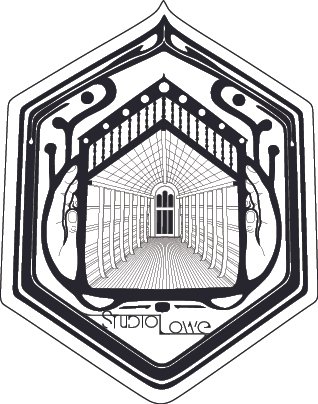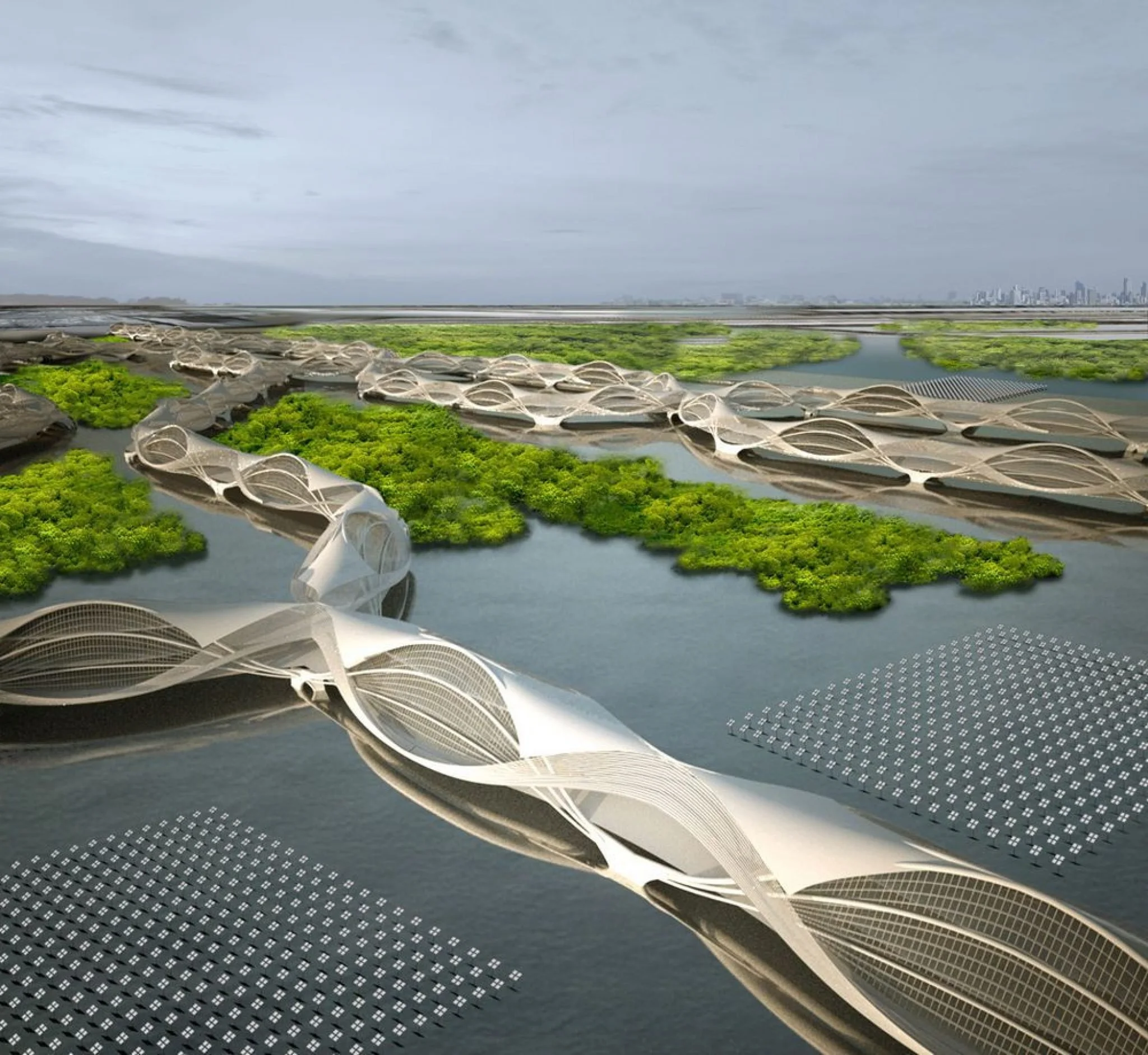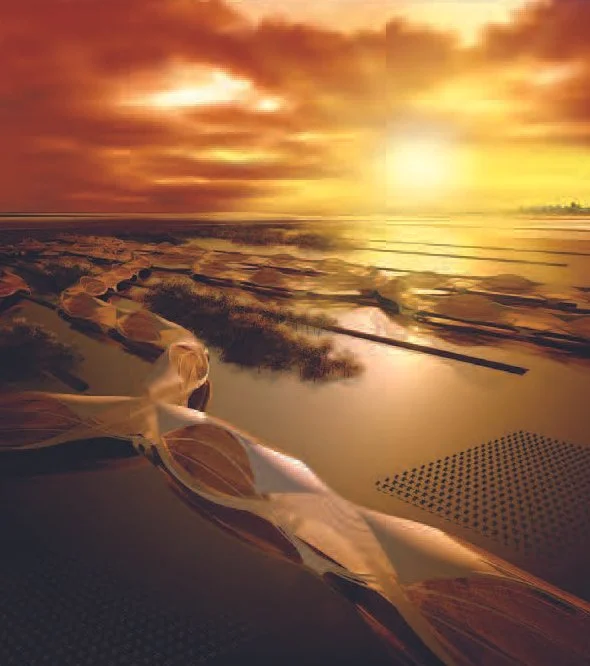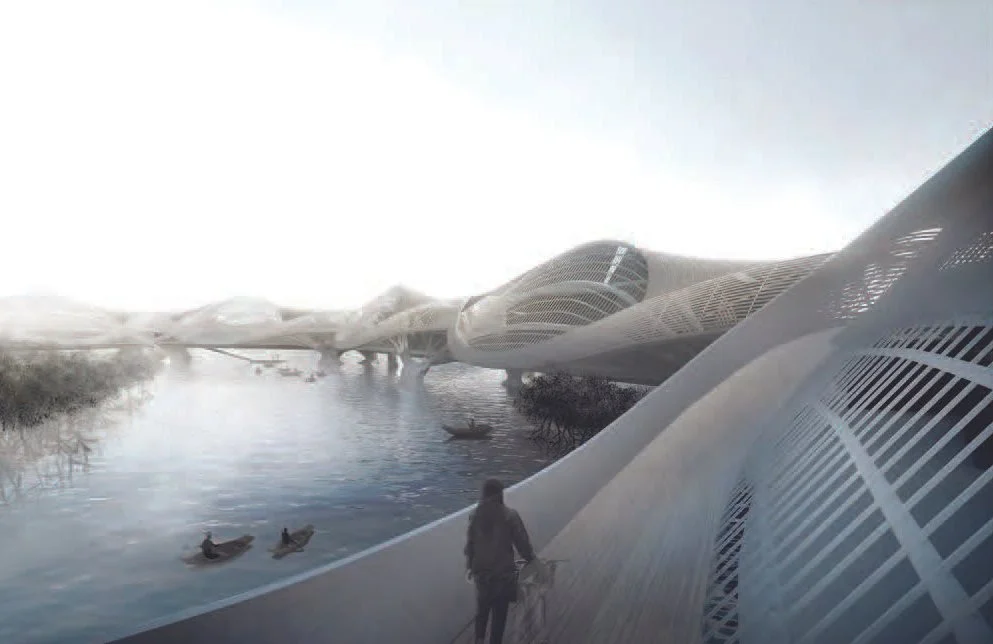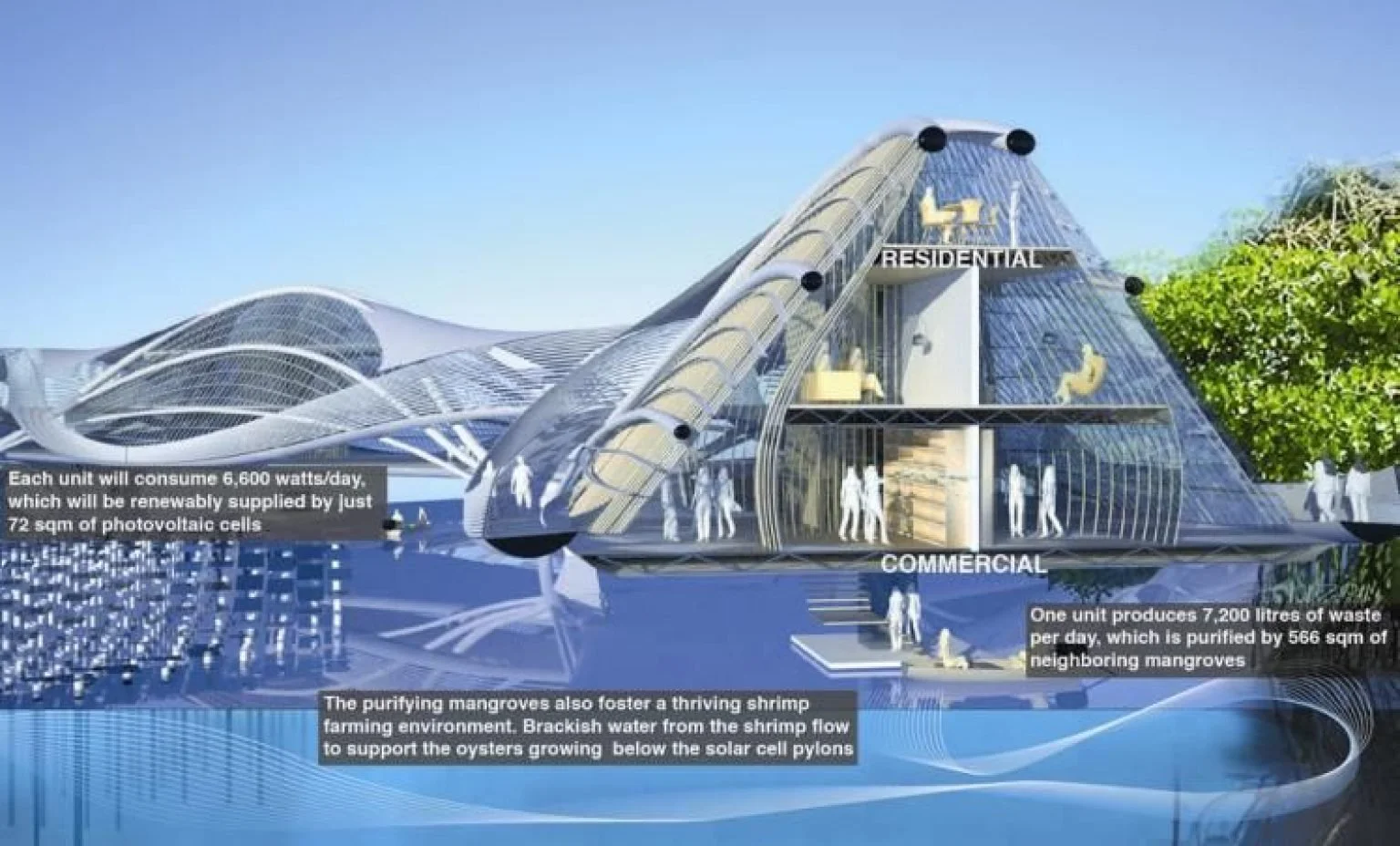Urban Design
Wetropolis transforms principles from Thailand's centuries old traditions of floodconscious aquatecture into a contemporary, sustainable and visually stunning deep ecological environment. Unlike existing Thai aqua-villages, like Koh Pan Yii, Wetropolis minimizes its foot print above the water, thereby enabling the continued cultivation of mangrove forests that will supply the community with carbon dioxide mitigating flora, with a natural effluent filtration system, with some of the only green open space in Bangkok and with moderate local shrimp farming. All the waste from a 3-story Wetropolis module is processed by 566 sqm of mangrove forest. Each module's energy consumption is generated from 72 sqm of solar farms above the water. And adult mangrove trees will be harvested every 15 years to replace the community’s tropical-friendly wood surfaces. Our goal was not to replace the Metropolis with the Wetropolis, but to exceed it. Cities are mistakenly anthropocentric. Wetropolis is eco-centric: a community prototype elevated above acres of underutilized shrimp farms that aligns the interests of shrimp farmers, urbanites, developers and the government by simultaneously sustaining mangrove restoration, modest shrimp fuming, and a growing population in a sinking city that can thrive unaffected by the impending floods.
Location
Bang Khuntien
Year
2012
Venue
Aedes Architecture Gallery Berlin
Role
Project Manager | S+PBA
